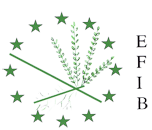In this event, with the participation of more than 300 people in site the landscape discipline was the protagonist. As a main conclusion, the landscape architecture is increasingly ecological and thus ecological processes are increasingly integrated into projects. The main international landscape studies were present at the event and all landscape scales were addressed, including also training and the future of the profession in countries, such as Spain, where it does not have a clear recognition.
The Soil and water Bioengineering was present in a few projects, the Sallent floodable park called Oasi ( Young Talent Architecture Award 2020 )and Solutions to the Flooding of the Estepona River in the urban area of Bakio (Vizkaya) from the landscape.office(SCIA SL)
Paola Sangalli , presented the round table (re)constructing the human habitat – the everyday scale of the landscape with the participation of relevant speakers Jesús Mª Erquicia ( Basque Gouvernement DOT ) , Kathryn Gustafson ( Park Central Valencia) , ArantzaiIriarte ( Bilbhodei ) and Niek Hazendonk ( Lanxmeer neighbourhood )
 Habitat, in ecology, is understood as the place or environment where a plant or animal naturally or normally lives and grows, because has the appropriate conditions for that.. In urban planning, it is understood as the built environment where human being lives. Combining both definitions, the habitat of the human being should be the built environment where the appropriate conditions exist to carry out our life, in all its phases . All living species take advantage of this space to suit their needs The homo sapiens must be an exception since the built space where we often live is far from this definition. Our cities, our villages, have been built on a scale that exceeds ourselves and, in this growth, we have been losing not only the capacity of coexistence between people but also with the surrounding environment. The recent crisis has shown that without an appropriate environment, people become even more vulnerable. During last year’s confinement, our first desire, in accordance with the situation we were living, was to meet with loved ones, families and friends. We are social beings. Our second wish, in order of priority – even before going out for a few beers – was to go for a walk and, seeking contact with nature (because we are also living beings). Recently, therefore, we have been able to see how much we strive in our search for accessing an open space – street, square, park, … – where we can meet nature and interact with other people. We have returned to value the closest landscape, the everyday one, the one that is at the height of our gaze.
Habitat, in ecology, is understood as the place or environment where a plant or animal naturally or normally lives and grows, because has the appropriate conditions for that.. In urban planning, it is understood as the built environment where human being lives. Combining both definitions, the habitat of the human being should be the built environment where the appropriate conditions exist to carry out our life, in all its phases . All living species take advantage of this space to suit their needs The homo sapiens must be an exception since the built space where we often live is far from this definition. Our cities, our villages, have been built on a scale that exceeds ourselves and, in this growth, we have been losing not only the capacity of coexistence between people but also with the surrounding environment. The recent crisis has shown that without an appropriate environment, people become even more vulnerable. During last year’s confinement, our first desire, in accordance with the situation we were living, was to meet with loved ones, families and friends. We are social beings. Our second wish, in order of priority – even before going out for a few beers – was to go for a walk and, seeking contact with nature (because we are also living beings). Recently, therefore, we have been able to see how much we strive in our search for accessing an open space – street, square, park, … – where we can meet nature and interact with other people. We have returned to value the closest landscape, the everyday one, the one that is at the height of our gaze.
This round table has tried to present for a further reflection, the need for change in the city, a change that begins from its relationship with the territory and is specified in the project and in new ways of living together



